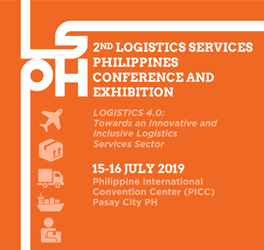 The Department of Tourism recognizes the importance of developing domestic airports in improving competitiveness and enhancing sustainable growth both in tourism and trade. It is also highlighted that the airports are not just gateways but more of economic growth drivers. This objective is included in the National Tourism Development Plan (NTDP).
The Department of Tourism recognizes the importance of developing domestic airports in improving competitiveness and enhancing sustainable growth both in tourism and trade. It is also highlighted that the airports are not just gateways but more of economic growth drivers. This objective is included in the National Tourism Development Plan (NTDP).
 During the 4th Annual Philippine Airport Modernization and Expansion Summit, DOT Undersecretary Arturo Boncato, Jr. shared that the tourism sector generated more than 5 million employment and 12.2% contribution to GDP in 2017. Initial data shows that there are about $ 8 billion income generated from tourist arrivals in 2018.
During the 4th Annual Philippine Airport Modernization and Expansion Summit, DOT Undersecretary Arturo Boncato, Jr. shared that the tourism sector generated more than 5 million employment and 12.2% contribution to GDP in 2017. Initial data shows that there are about $ 8 billion income generated from tourist arrivals in 2018.
The development of secondary gateways and provincial airports is one of the advocacies of the Export Development Council. By doing so, congestion in the capital, especially in the immediate and medium term, will be reduced, which in turn will mean lower travel cost for passengers.
To date, there are only 19 night-rated airports in the country. According to the Civil Aviation Authority of the Philippines (CAAP), the additional airports with Airfield Lighting System (ALS) are the following: Bohol/ Panglao Principal Airport, Subic Bay International Airport, Tuguegarao Principal Airport, and Naga Principal Airport.
The airports to be provided with ALS this year (2019) and currently being processed are the following: Cotabato Principal Airport, Cauayan Principal Airport, Dipolog Principal Airport and Pagadian Principal Airport.
The other recommendations for the domestic airport development are: (1) Modernizing the infrastructure and facilities of the domestic airports to accommodate direct flights to the major gateway of the Philippines, (2) Funding prioritization for the upgrading of domestic airports to provided night-landing and all-weather facilities for a more efficient operation and to emphasize safety improvements to meet International Civil Aviation Organization Standards And Recommended Practices (ICAO SARPS), (3) Development of airports through Public-Private Partnership, and (4) Development of a coherent long-term investment plan for the airports.
CAAP assured of its continuous work to make more airports in the country night-rated. Equipping airports with night-rated capabilities will enable these facilities to serve more passengers. MJAA



 The National Economic and Development Authority (NEDA) and the University of the Philippines Public Administration Research and Extension Services Foundation Inc., Regulatory Reform Support Program for National Development (UPPAF-RESPOND)
The National Economic and Development Authority (NEDA) and the University of the Philippines Public Administration Research and Extension Services Foundation Inc., Regulatory Reform Support Program for National Development (UPPAF-RESPOND)  The issues and challenges faced by the transport and logistics sector were discussed last 15 April 2020, during the 3rd eForum of #ResilenceAndRecoveryPH with the topic “Local and Global Supply Chains: Quick Assessment and Ways Forward”.
The issues and challenges faced by the transport and logistics sector were discussed last 15 April 2020, during the 3rd eForum of #ResilenceAndRecoveryPH with the topic “Local and Global Supply Chains: Quick Assessment and Ways Forward”.  The National Economic and Development Authority’s (NEDA) plan gets a GO, pursuant to the Inter-Agency Task Force (IATF) Resolution No. 24 dated 15 April 2020 – acquiring the approval to develop a Supply Chain Analytics (SCAn) dashboard, and to conduct a Regulatory Impact Assessment (RIA).
The National Economic and Development Authority’s (NEDA) plan gets a GO, pursuant to the Inter-Agency Task Force (IATF) Resolution No. 24 dated 15 April 2020 – acquiring the approval to develop a Supply Chain Analytics (SCAn) dashboard, and to conduct a Regulatory Impact Assessment (RIA).  Exporters from Mindanao are encouraged to explore the Davao-Manado route for transporting their goods and products, specifically food products (both fresh and processed) for a more cost-effective and shorter route (from 5 weeks to 13 days). This was presented during a meeting hosted by Philippine Ambassador to Indonesia, Amb. Leechiong T. Wee, as both countries – the Philippines and Indonesia are also trying to explore ways to resume the Davao-GenSan-Bitung route with a Manila-based shipping company.
Exporters from Mindanao are encouraged to explore the Davao-Manado route for transporting their goods and products, specifically food products (both fresh and processed) for a more cost-effective and shorter route (from 5 weeks to 13 days). This was presented during a meeting hosted by Philippine Ambassador to Indonesia, Amb. Leechiong T. Wee, as both countries – the Philippines and Indonesia are also trying to explore ways to resume the Davao-GenSan-Bitung route with a Manila-based shipping company. During his Government Address on The Roads and Traffic Expo, Chairman Danilo Lim of Metro Manila Development Authority (MMDA) talked about the importance of transportation as one of the key sector in our fast growing economy.
During his Government Address on The Roads and Traffic Expo, Chairman Danilo Lim of Metro Manila Development Authority (MMDA) talked about the importance of transportation as one of the key sector in our fast growing economy. The President of Multimodal and Logistics Association Inc. (PMTLAI) Ms. Marilyn C. Alberto, reported during the 2nd Logistics Services Philippines Conference and Exhibition (LSPH) that the issuance of the Joint Administrative Order (JAO) which focuses to address the problems on high shipping cost and port congestion will be the “long term solutions to the problems that affects the logistics services ability to enable business competitiveness.”
The President of Multimodal and Logistics Association Inc. (PMTLAI) Ms. Marilyn C. Alberto, reported during the 2nd Logistics Services Philippines Conference and Exhibition (LSPH) that the issuance of the Joint Administrative Order (JAO) which focuses to address the problems on high shipping cost and port congestion will be the “long term solutions to the problems that affects the logistics services ability to enable business competitiveness.” In a recent pronouncement, DTI Secretary Ramon Lopez stated that the Departments of Trade and Industry, Transportation and Finance will issue the Joint Administrative Order (JAO) that will regulate local charges imposed by international shipping lines.
In a recent pronouncement, DTI Secretary Ramon Lopez stated that the Departments of Trade and Industry, Transportation and Finance will issue the Joint Administrative Order (JAO) that will regulate local charges imposed by international shipping lines. The Department of Tourism recognizes the importance of developing domestic airports in improving competitiveness and enhancing sustainable growth both in tourism and trade. It is also highlighted that the airports are not just gateways but more of economic growth drivers. This objective is included in the National Tourism Development Plan (NTDP).
The Department of Tourism recognizes the importance of developing domestic airports in improving competitiveness and enhancing sustainable growth both in tourism and trade. It is also highlighted that the airports are not just gateways but more of economic growth drivers. This objective is included in the National Tourism Development Plan (NTDP).